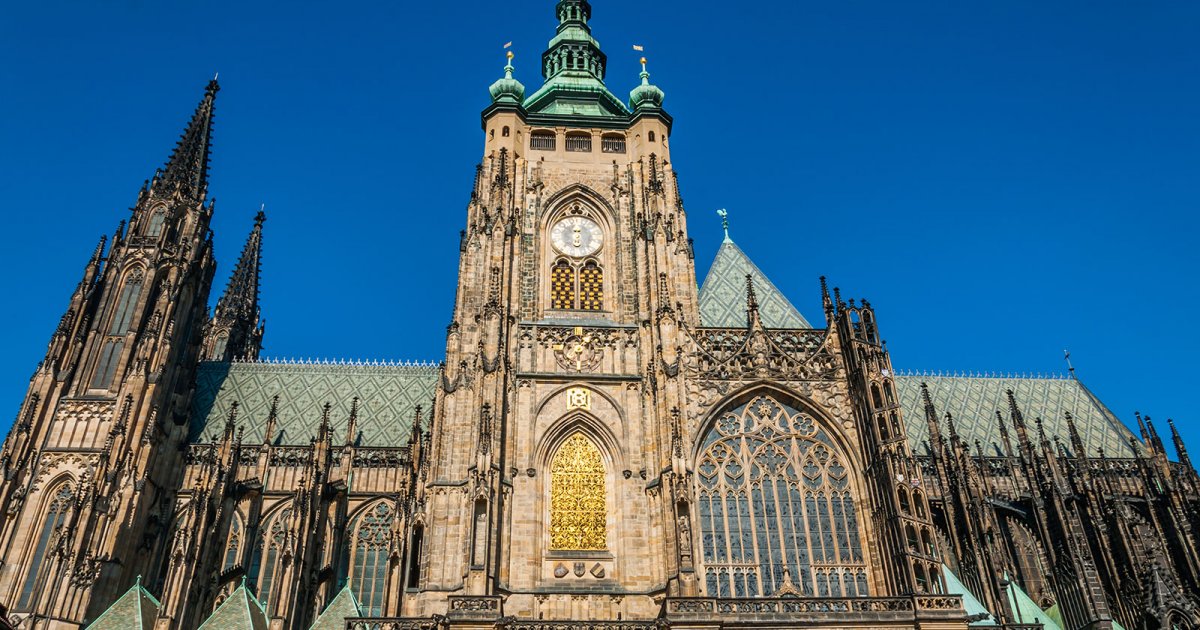CASTLE, Cathedral (Exterior)
 Language: English / USA
Language: English / USA
The pride of Prague Castle, a symbol of the whole city and home to the Bohemian Crown Jewels, Saint Vitus Cathedral is a splendid example of fourteenth-century European Gothic architecture, which actually took 600 years to complete.
The Cathedral as it stands today was built on the orders of Charles IV to replace an older Romanesque basilica, the crypt of which was preserved as the tomb of the kings. The part at the back, with the choir and the apse, also dates to this period.
This is the most sacred area of the Cathedral, conceived as a marvelous triple-nave structure with radiating chapels from which airy flying buttresses rise up.
Construction was begun in 1344 by the Frenchman Mathieu d’Arras, and continued from 1353 onwards by the German architect Peter Parler, who designed the fabulous net vaults. After the deaths of both Charles IV and Parler, the construction work was slowed by the wars that raged through Bohemia during the 15th century. Work on the Cathedral then came to a halt for more than three centuries, leaving it halfway completed at the height of the transept, with a provisional wall resting against which was a huge organ, and did not begin again until the second half of the 19th century.
The Cathedral was finished in 1929, when the older part and the newer part of naves were joined together, and with the completion of the main façade, nestled between two tall, pointed towers.
The right side, opposite the Royal Palace, is dominated by the imposing south tower, 97 meters high and topped with a small Baroque cupola. Inside the tower, a steeply winding staircase of almost 300 steps leads up to a terrace offering amazing views.
The triple-arch Golden Gate, used for a long time as the main entrance to the Cathedral, takes its name from the marvelous golden mosaic of the Last Judgement, created around 1370 by Venetian artists.
An interesting fact: the extraordinary vaults by Peter Parler are very similar to those found in English Gothic cathedrals, which prompted debate among art historians as to who copied whom. It is now widely accepted, however, that it was the English artists at the end of the 14th century who were influenced by the technique and the design of the outstanding German architect Peter Parler.



